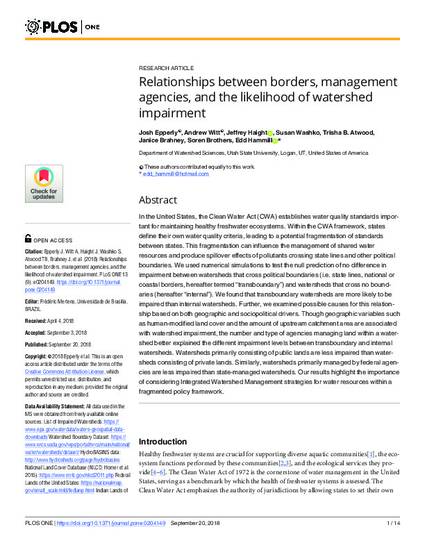
- Clean Water Act,
- water,
- Pollutions,
- Watersheds
In the United States, the Clean Water Act (CWA) establishes water quality standards important for maintaining healthy freshwater ecosystems. Within the CWA framework, states define their own water quality criteria, leading to a potential fragmentation of standards between states. This fragmentation can influence the management of shared water resources and produce spillover effects of pollutants crossing state lines and other political boundaries. We used numerical simulations to test the null prediction of no difference in impairment between watersheds that cross political boundaries (i.e. state lines, national or coastal borders, hereafter termed “transboundary”) and watersheds that cross no boundaries (hereafter “internal”). We found that transboundary watersheds are more likely to be impaired than internal watersheds. Further, we examined possible causes for this relationship based on both geographic and sociopolitical drivers. Though geographic variables such as human-modified land cover and the amount of upstream catchment area are associated with watershed impairment, the number and type of agencies managing land within a watershed better explained the different impairment levels between transboundary and internal watersheds. Watersheds primarily consisting of public lands are less impaired than watersheds consisting of private lands. Similarly, watersheds primarily managed by federal agencies are less impaired than state-managed watersheds. Our results highlight the importance of considering Integrated Watershed Management strategies for water resources within a fragmented policy framework.
